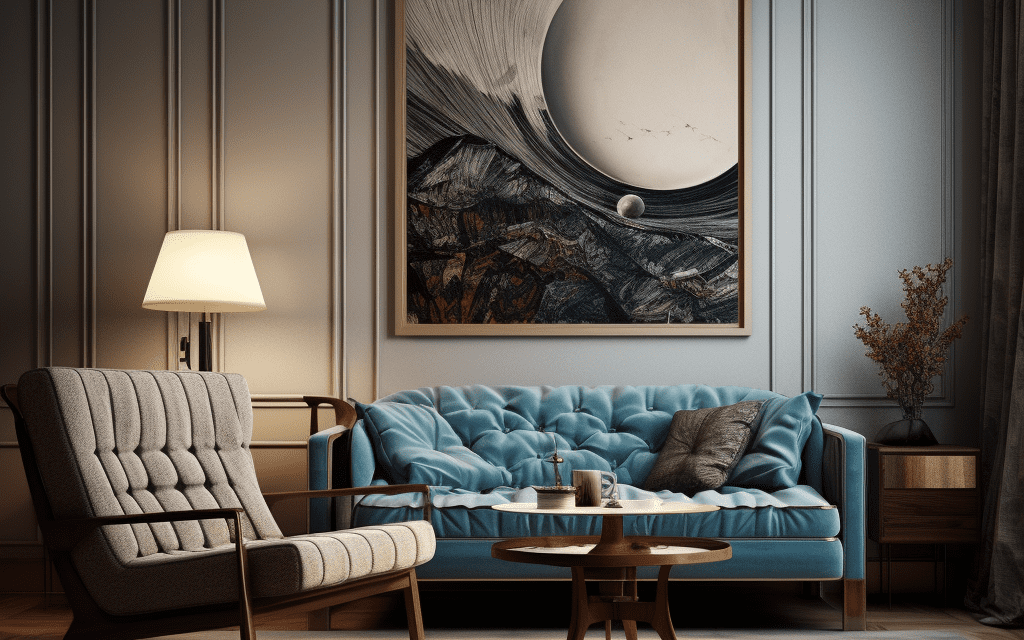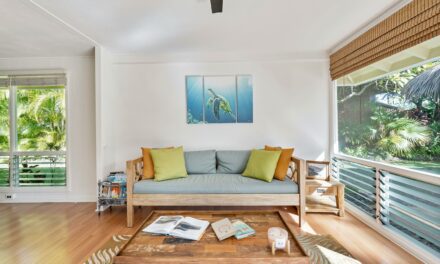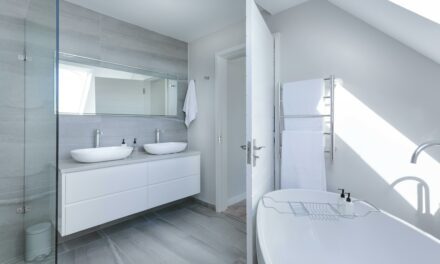When you enter a well-designed space, you may notice a sense of balance and flow that makes it feel harmonious and visually pleasing. This feeling is often created by the use of rhythm in interior design. But what is rhythm in interior design, and why is it important?
In this article, we will explore the principles and elements of rhythm in interior design. We will also discuss the importance of rhythm in creating a cohesive and harmonious atmosphere in your living spaces. Whether you are a professional designer or a homeowner looking to enhance your decor, understanding and utilizing rhythm in interior design can have a significant impact on the overall look and feel of your space.
What is Rhythm in Interior Design?
Rhythm refers to the repetition, progression, and contrast of elements within a space. It creates a sense of movement and flow that guides the eye and creates visual interest. Rhythm can be found in the lines, shapes, colors, patterns, and textures used in interior design.
Now that we’ve introduced the concept of rhythm in interior design, let’s delve deeper into the principles behind it. Understanding these principles will help you create visually engaging and harmonious living spaces.
The Elements of Rhythm in Interior Design
Before we explore the principles of rhythm, it’s important to understand the elements that contribute to it. These elements include:
| Element | Description |
|---|---|
| Lines | Straight, curved or angled lines can create a sense of movement throughout a space. |
| Shapes | Different shapes, such as circles, triangles and squares, can be repeated or contrasted to create a sense of rhythm. |
| Colors | Repeating or contrasting colors can create a sense of balance and flow throughout a space. |
| Patterns | Repeating patterns can create a sense of movement and continuity in a space. |
| Textures | Varying textures can create a sense of depth and interest in a space. |
Now that we understand the elements that contribute to rhythm, let’s explore the principles that bring them together.
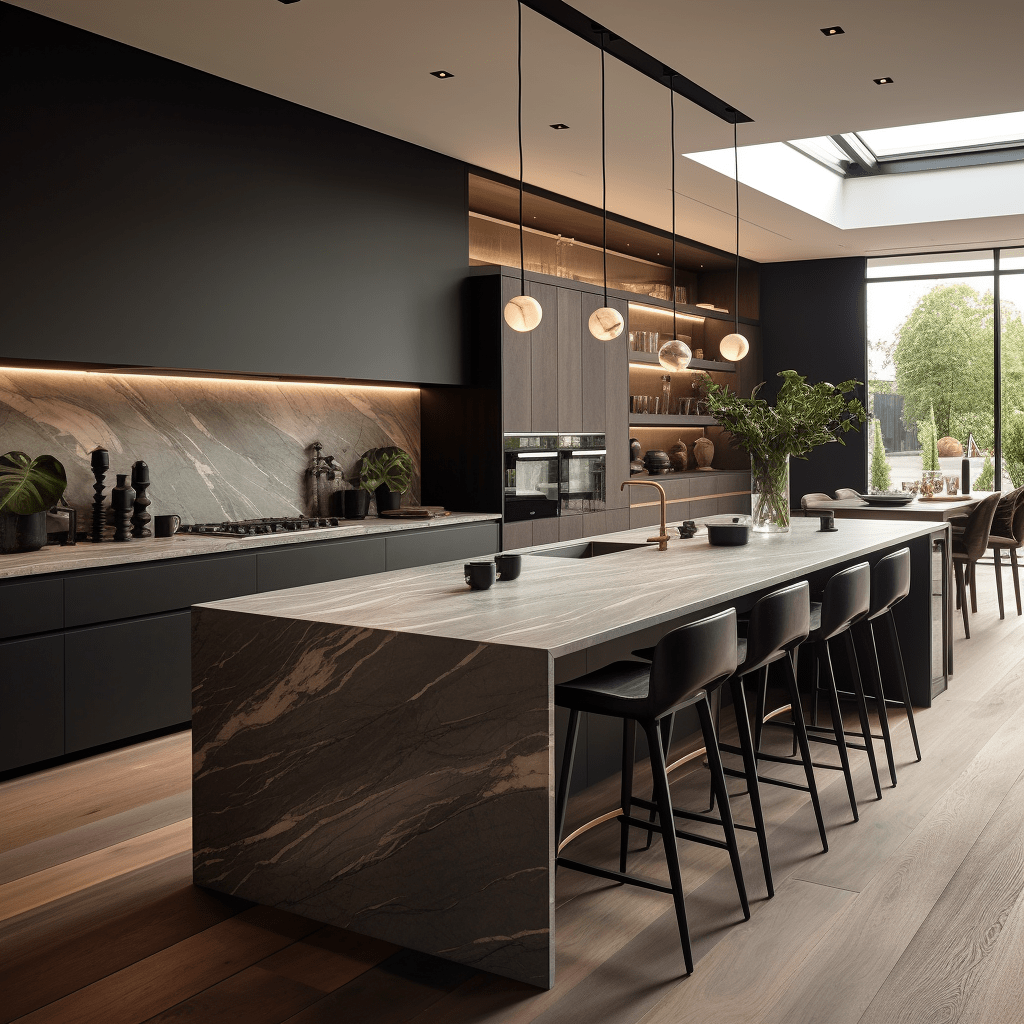
The Principles of Rhythm in Interior Design
The three principles of rhythm in interior design are:
- Repetition: Repeating elements such as lines, shapes, colors, patterns and textures can create a sense of visual rhythm and flow throughout a space. This repetition can be literal, such as using the same wallpaper on all four walls of a room, or more subtle, such as repeating a color on different accessories throughout a space.
- Progression: Progression refers to using a series of elements that gradually increase or decrease in size, color or texture. This can create a sense of movement and lead the eye through a space. An example of progression in interior design would be using throw pillows of different sizes, arranged in order from smallest to largest.
- Contrast: Contrast involves using opposing elements to create a sense of tension and interest. This can involve contrasting colors, such as black and white, or contrasting textures, such as pairing a smooth surface with a rough one.
By utilizing these principles, you can create a sense of rhythm in your home decor that is both visually interesting and harmonious.
Tips for Creating Rhythm in Interior Design
Here are some practical tips for creating rhythm in your interior design:
- Choose a focal point in each room and repeat elements around it.
- Vary the scale of objects to create a sense of progression.
- Use a color palette with both bold and neutral tones for contrast.
- Experiment with different patterns and textures to create interest.
- Establish a visual flow by arranging furniture in a way that leads the eye from one element to another.
By implementing these tips, you can create a sense of rhythm in your home that will make it feel cohesive and visually pleasing.
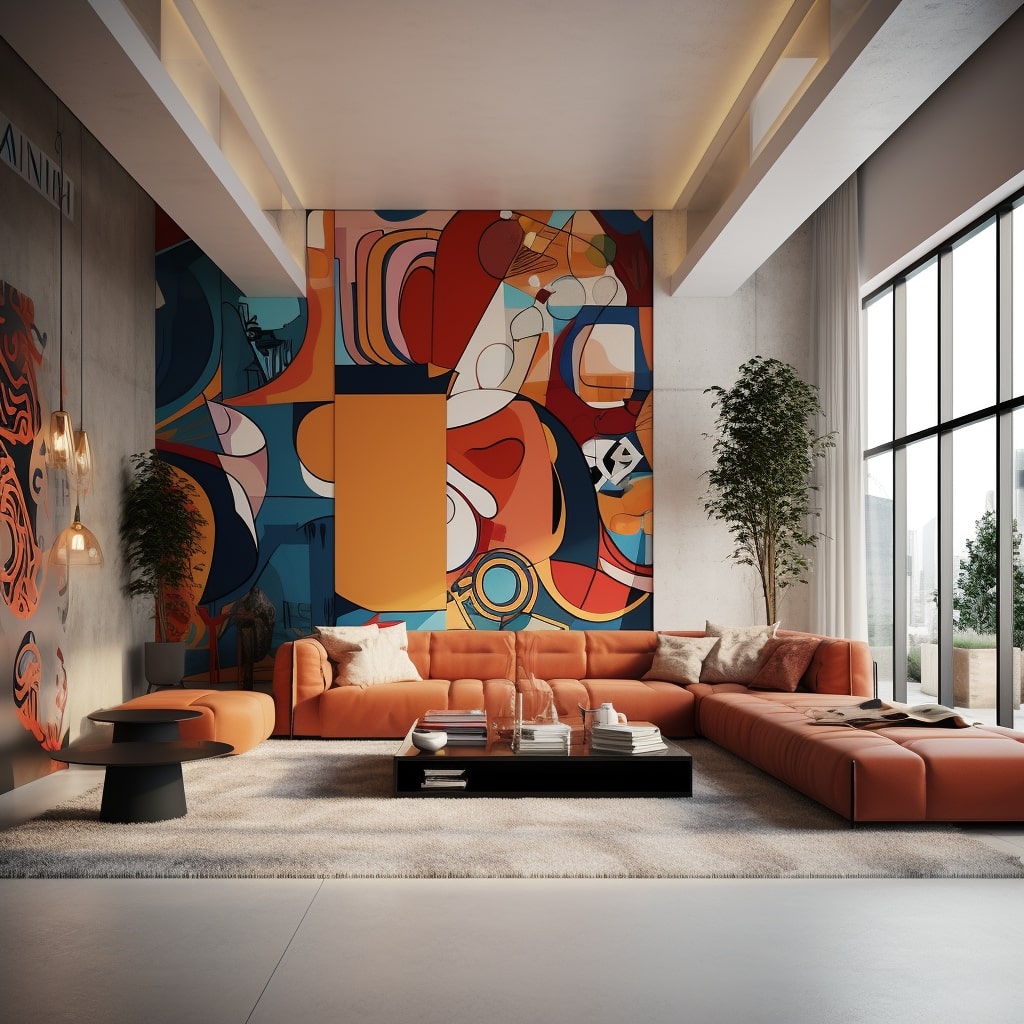
Elements of Rhythm in Interior Design
The elements of interior design are the building blocks that contribute to achieving rhythm in a space. By definition, rhythm is a visual pattern created by a repetition of elements. Let’s take a closer look at the different elements of rhythm in interior design:
| Element | Description |
|---|---|
| Lines | Horizontal, vertical, diagonal, or curved lines can create a sense of movement and flow in a room. For example, using a horizontal line such as a low console table can help to ground the space. |
| Shapes | Geometric shapes such as circles, squares, and triangles can create a sense of repetition and rhythm. For example, using a series of square-shaped frames on a gallery wall can create a sense of cohesion and visual pattern. |
| Colors | Using a consistent color palette can help to create a sense of rhythm and harmony in a space. For example, repeating a certain shade of blue in a room can help to create a cohesive look. |
| Patterns | Repeating patterns such as stripes or chevrons can create a sense of movement and visual rhythm. For example, using a series of black and white striped pillows on a neutral sofa can create a sense of visual pattern. |
| Textures | Using a variety of textures can also contribute to creating a sense of rhythm in a space. For example, combining a plush velvet sofa with a rough jute rug can create a sense of contrast and visual interest. |
By thoughtfully incorporating these different elements, you can create a sense of rhythm and flow in your living spaces.
The Importance of Rhythm in Interior Design
When it comes to interior design, rhythm plays a crucial role in creating a cohesive and visually appealing space. Rhythm helps to establish a sense of movement and flow within a room, making it feel more harmonious and balanced. Whether you are designing a living room, bedroom, or kitchen, incorporating rhythm into your design will help to bring the space to life.
Rhythm helps to establish a sense of movement and flow within a room, making it feel more harmonious and balanced.
One of the primary benefits of rhythm in interior design is that it helps to tie different elements of a space together. By incorporating repeating patterns, colors, or shapes throughout a room, you can create a sense of unity that brings the space together as a whole. This can be especially helpful in larger rooms or open-concept spaces, where it can be challenging to establish visual boundaries.
In addition to enhancing the overall aesthetic appeal of the space, rhythm can also have a psychological impact on those who inhabit it. When a space feels harmonious and balanced, it can help to promote feelings of relaxation and calm. On the other hand, a space that feels disjointed or chaotic can have the opposite effect, leading to feelings of stress or anxiety.
When a space feels harmonious and balanced, it can help to promote feelings of relaxation and calm.
Overall, incorporating rhythm into your interior design is essential for creating a visually engaging and harmonious space. By utilizing repeating patterns, colors, and shapes, you can establish a sense of movement and flow throughout the room, tying different elements together and creating a cohesive whole. Not only will this enhance the aesthetic appeal of the space, but it can also have a positive psychological impact on those who inhabit it.
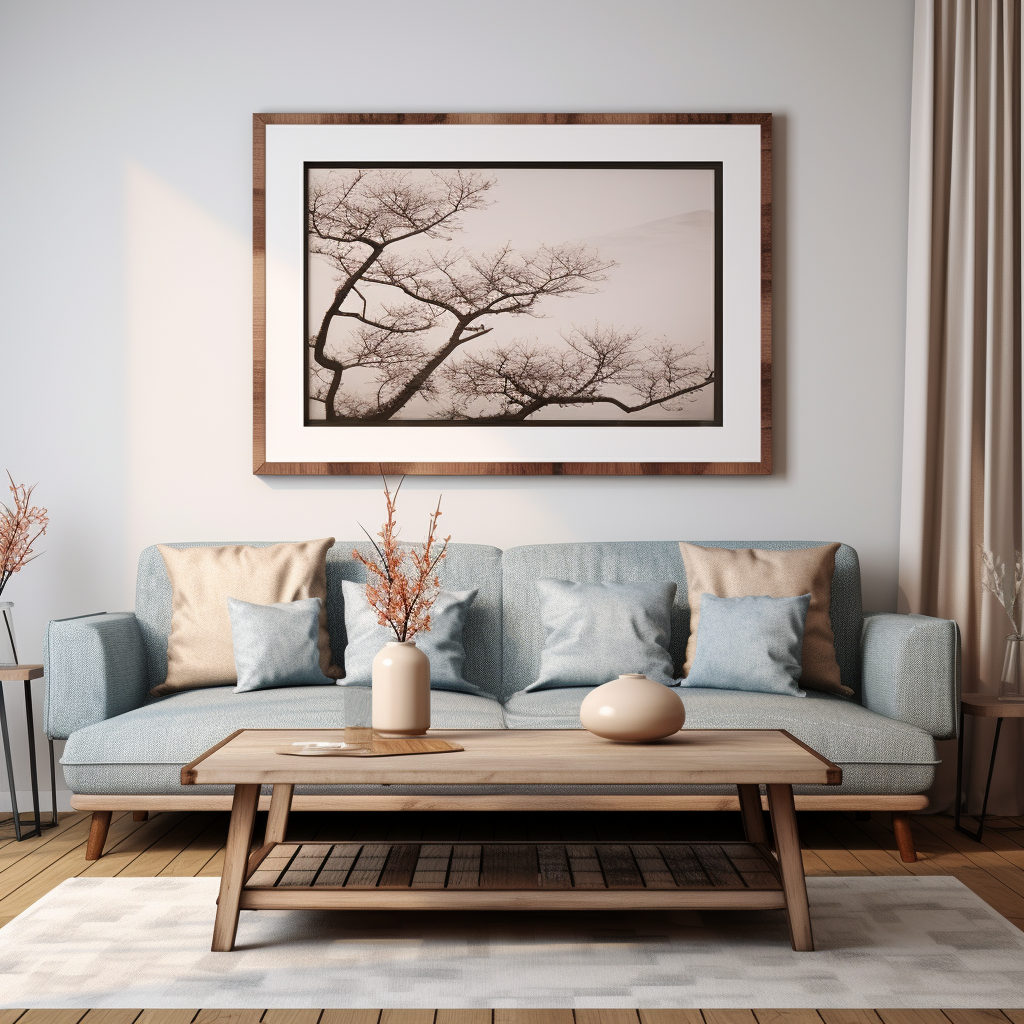
Rhythm and Harmony in Interior Design
As we’ve seen in previous sections, rhythm plays a vital role in creating visually appealing and harmonious living spaces. But how does rhythm contribute to overall harmony and balance in interior design?
Put simply, rhythm helps to establish a consistent visual flow throughout a space. By utilizing repetition, progression, and contrast, elements within a room are united and work together in a cohesive manner. This creates a sense of harmony and balance that is pleasing to the eye.
When it comes to incorporating rhythm into interior design, different styles may choose to emphasize different elements. For example, a minimalist style may rely heavily on the repetition of simple shapes and lines to create a sense of movement. In contrast, a bohemian style may incorporate a variety of patterns and textures to establish rhythm and flow.
| Interior Design Style | Rhythm Emphasized Elements |
|---|---|
| Minimalist | Repetition of simple shapes and lines |
| Bohemian | Variety of patterns and textures |
| Art Deco | Bold geometric shapes and patterns |
Of course, these are just a few examples. There are countless ways to incorporate rhythm and establish harmony in your interior design, and the right approach will depend on your personal style and preferences.
Creating a Sense of Movement
When considering rhythm and harmony in interior design, it’s important to think about how you want people to move through the space. By utilizing design elements to establish a sense of movement, you can create a more engaging and dynamic environment.
One way to create movement is through the use of focal points. By establishing a clear focal point in a room, you can draw the eye and create a sense of direction. For example, a statement piece of art or a unique light fixture can serve as a focal point that anchors the space and creates visual interest.
Another way to create movement is through repetition. By repeating design elements throughout a space, you can establish a consistent visual flow that guides the eye. This can be achieved through the use of a repeated pattern, color, or texture.
Ultimately, the key to achieving rhythm and harmony in interior design is to strike a balance between consistency and variety. By repeating certain design elements while also incorporating variety in others, you can create a visually engaging space that feels cohesive and balanced.
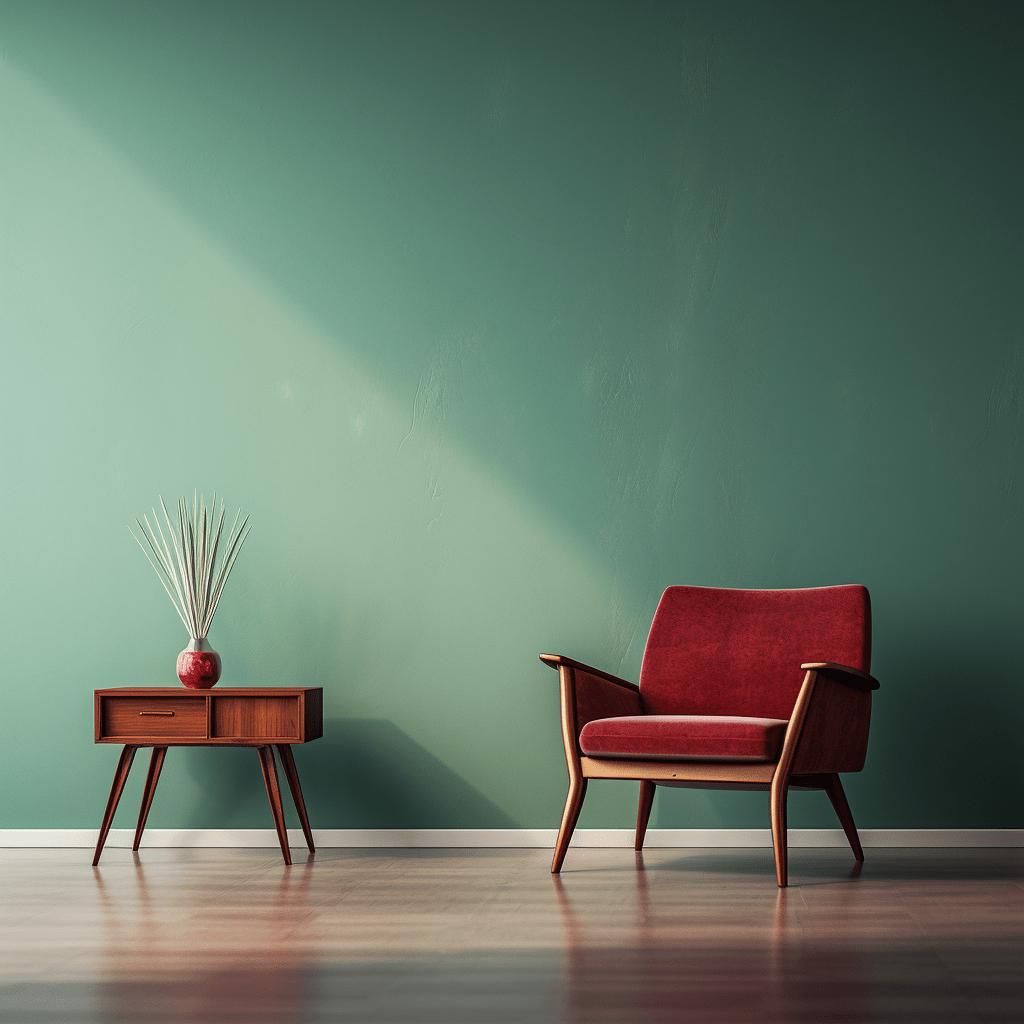
Creating Rhythm in Home Decor
Creating rhythm in home decor is all about establishing a visual flow that draws the eye from one element to another. Designers achieve this flow through the use of repetition, patterns, and focal points. Here are some practical tips for creating rhythm in your home decor:
- Use repetition: Repeat shapes, colors, materials, or patterns to create a sense of unity and continuity. For example, you can use the same shape in different sizes, colors, and materials to create a visually cohesive space. Alternatively, use patterns on your throw pillows, area rugs, and curtains to create a sense of rhythm throughout the room.
- Create a focal point: A focal point is a dominant element in a room that draws the eye and acts as a visual anchor. It can be a piece of art, a unique piece of furniture, a vignette, or an architectural feature such as a fireplace. By placing a focal point in a room, you can create a sense of rhythm and movement around it.
- Showcase contrast: Contrast is an effective way to create visual interest in a room. You can create contrast through the use of color, texture, or shape. For example, if you have a soft, plush rug, pair it with a sleek, angular coffee table to create a sense of contrast and visual tension.
- Establish a visual flow: A visual flow is the movement of the eye from one element to another in a room. You can create a visual flow by arranging furniture in a way that creates natural pathways, using area rugs to define different zones, or by using lighting to highlight specific areas of the room.
When creating rhythm in home decor, it’s important to strike a balance between consistency and variety. Too much repetition can make a room feel monotonous, while too much variety can make it feel chaotic. By using these tips, you can create a harmonious and visually engaging space that flows seamlessly from one element to the next.
Rhythm in Interior Design: Case Studies
Now that we’ve explored the principles and elements of rhythm and its importance in interior design, let’s take a look at some real-life examples of how it can be incorporated into home decor. These case studies will provide inspiration and ideas for implementing rhythm in your own interior design projects.
Case Study 1: Contemporary Living Room
This living room features a contemporary design with a focus on clean lines and geometric shapes. The room utilizes rhythm to create a sense of movement and flow. The wall art features a pattern that is repeated in the throw pillows, while the rectangular shapes of the coffee table and rug are echoed in the shape of the couch and the wall panels. The color palette is kept simple, with a blue base accented by pops of brown.
| Elements of Rhythm: | Repetition of pattern | Repetition of shape | Contrast of color |
|---|
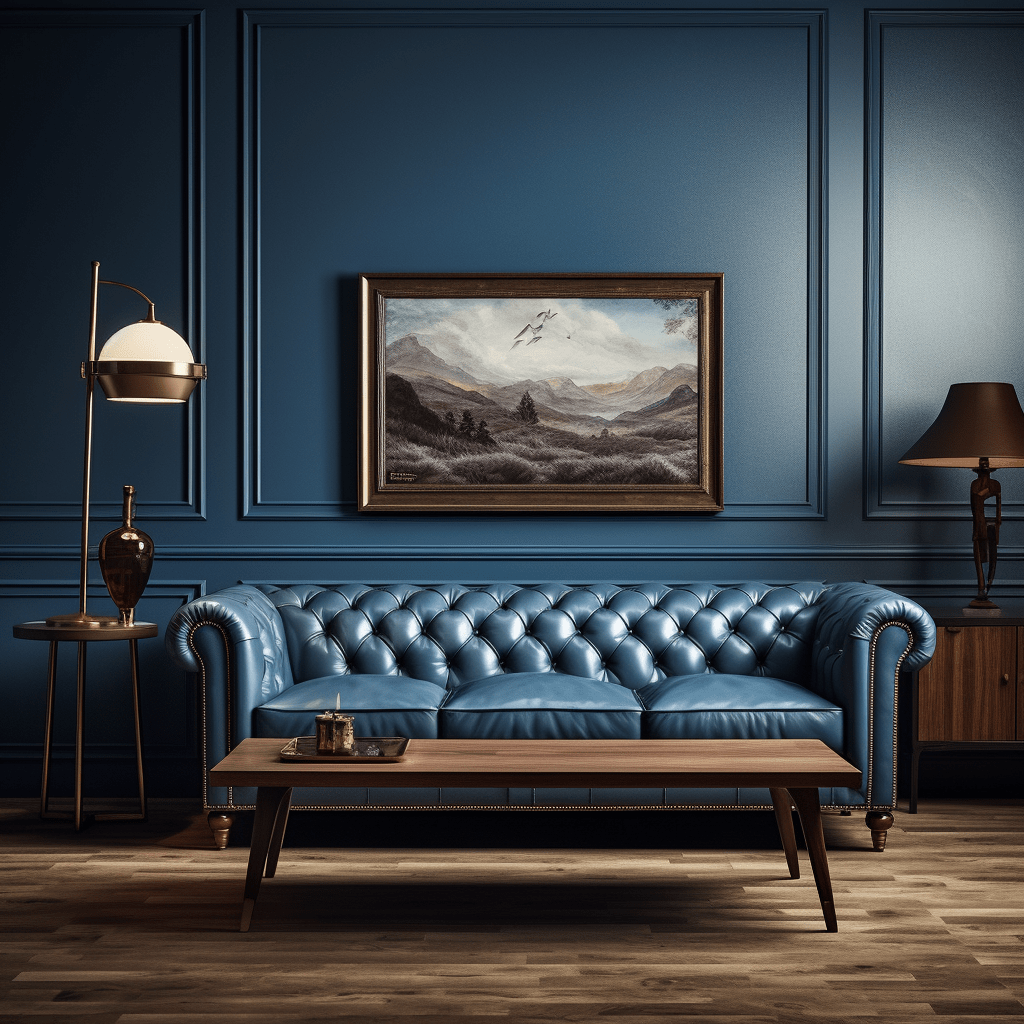
Case Study 2: Eclectic Bedroom
This eclectic bedroom blends various styles and patterns to create a unique and visually engaging space. The room utilizes rhythm to connect the different elements and create a harmonious atmosphere. The rectangular shapes in the rug and pendant lights are echoed in the pattern of the throw pillows, while the repeating geometric shapes of the wallpaper and dresser drawers provide a sense of consistency. The color scheme is kept cohesive with a mix of neutral tones and pops of black and white.
| Elements of Rhythm: | Repetition of shape | Repetition of pattern | Contrast of color |
|---|
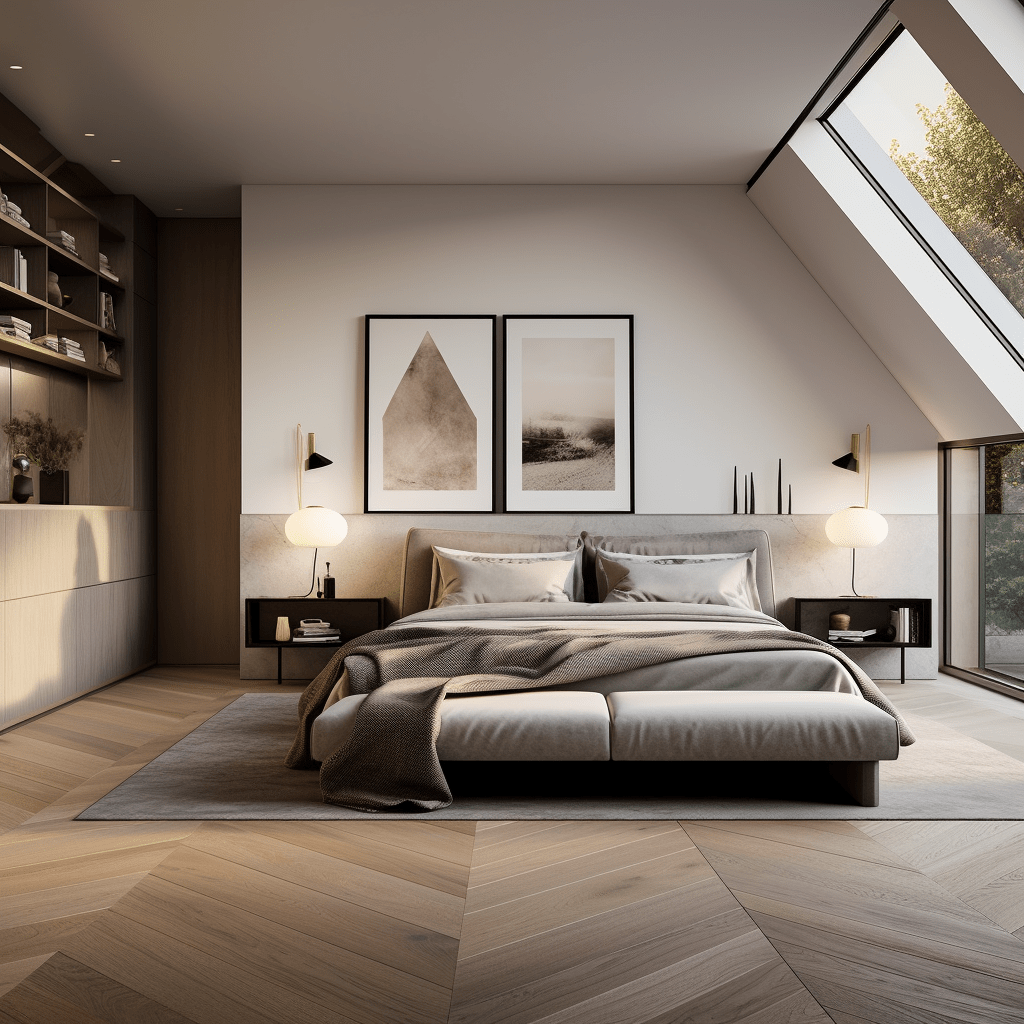
Case Study 3: Industrial Kitchen
This industrial kitchen features a mix of textures and materials to create a modern yet cozy atmosphere. The room utilizes rhythm to create a sense of balance and movement. The horizontal lines of the brick wall and cabinet doors are echoed in the wood paneling on the ceiling, while the metal accents in the lights provide a contrast in texture. The color scheme is kept simple, with a neutral base accented by pops of blue and green.
| Elements of Rhythm: | Repetition of shape | Repetition of texture | Contrast of material |
|---|
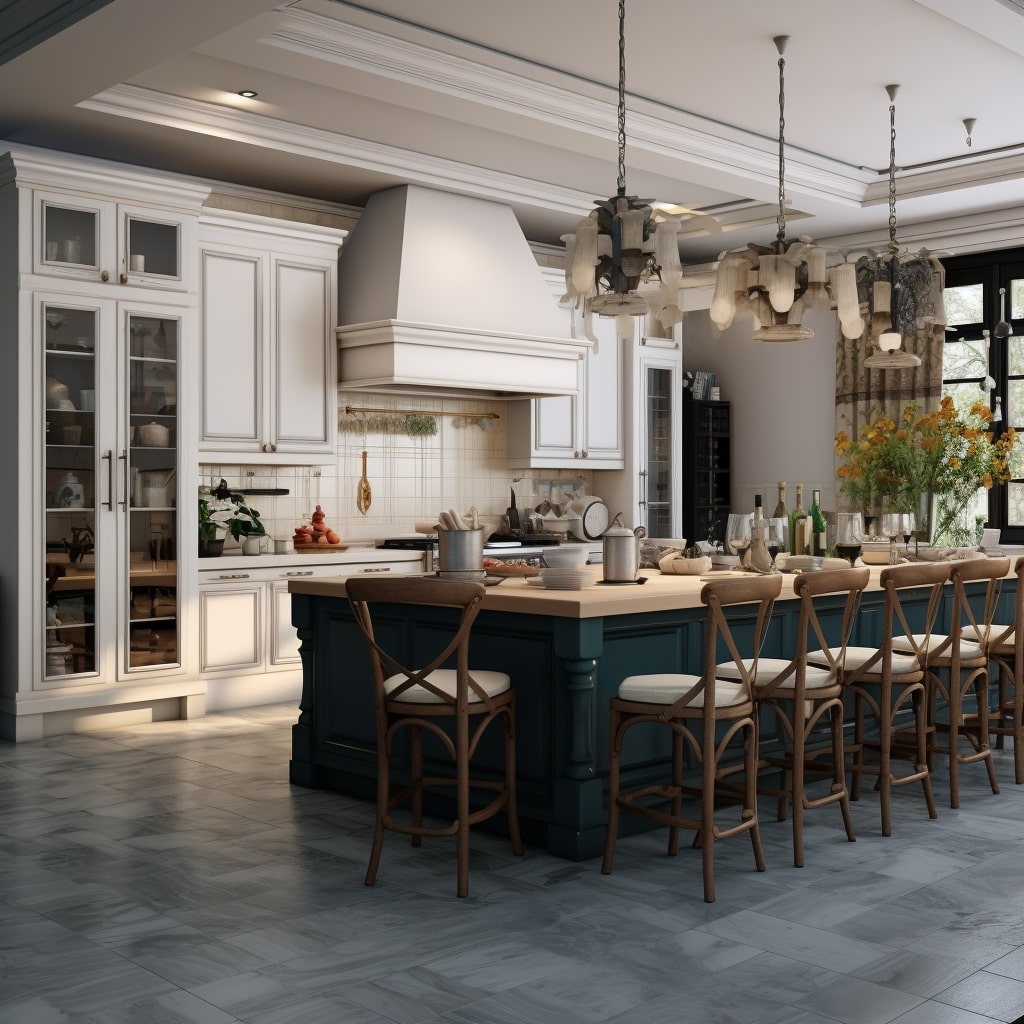
These case studies demonstrate how rhythm can be used to create visually appealing and harmonious living spaces. By incorporating repetition, progression, and contrast of elements, you can create a sense of flow and movement in your home decor. Remember, the key to successful rhythm in interior design is to strike a balance between consistency and variety.
Tips for Achieving Rhythm in Interior Design
Creating rhythm in interior design can seem like a daunting task, but with a few simple tips and tricks, you can easily incorporate rhythm into your home decor. Here are some practical suggestions:
- Use repetition: Repeating elements such as shapes, colors, or patterns can create a sense of rhythm and harmony. However, be careful not to overdo it, as too much repetition can become monotonous.
- Utilize contrast: Contrast is a powerful tool that can be used to create rhythm. Use contrasting colors, textures, or shapes to add interest and movement to a room.
- Create a focal point: A focal point is an area in a room that immediately draws the eye. By incorporating a focal point, you can establish a visual flow and create a sense of movement in a space.
- Play with patterns: Patterns can be used to create a strong sense of rhythm and movement. Mix and match patterns of different sizes and styles to add interest to a room.
- Balance consistency and variety: A successful rhythm is a delicate balance between consistency and variety. Too much consistency can become boring, while too much variety can create chaos. Strive to strike a balance between the two.
- Consider the room’s function: The rhythm of a room should be influenced by its function. For example, a bedroom should have a more relaxed and soothing rhythm, while a living room may have a more energetic and dynamic rhythm.
- Experiment with scale: Varying the scale of elements in a room can create a sense of movement and rhythm. Mix large and small items, and play with different proportions to add interest to a space.
By incorporating these tips and tricks, you can easily achieve rhythm in your interior design projects. Remember to experiment and have fun, and don’t be afraid to try new things!
Frequently Asked Questions about Rhythm in Interior Design
As we’ve explored throughout this article, rhythm is a vital element in creating visually appealing and harmonious living spaces. However, it’s common to have questions and concerns about how to effectively incorporate it into your interior design projects.
What is the difference between rhythm and pattern in interior design?
Pattern and rhythm are often used interchangeably, but there is a subtle difference between the two. Pattern refers to the repetition of a decorative motif or design element, while rhythm encompasses the movement and flow created by the repetition of these patterns or elements.
How can I create rhythm in a small space without overwhelming it?
Creating rhythm in a small space is all about balance. Incorporate repetition in a subtle way, such as using the same color or texture throughout the space. Avoid using too many contrasting patterns or colors, as this can make the space feel cluttered and chaotic. Focus on creating a few focal points that draw the eye and establish a visual flow.
Can I use rhythm in a minimalist interior design style?
Absolutely! Rhythm can be utilized in any interior design style, including minimalist. In fact, repetition is often a key element in minimalist design. Focus on using a limited color palette and incorporating repetition in a subtle way, such as through the use of consistent lines or shapes.
How does rhythm affect the mood of a room?
Rhythm can have a significant impact on the mood of a room. When used effectively, it can create a sense of movement and flow that promotes relaxation and harmony. On the other hand, a lack of rhythm can make a space feel disjointed and chaotic, which can lead to feelings of stress and anxiety.
Can I incorporate multiple types of rhythm in one space?
Absolutely! In fact, utilizing multiple types of rhythm can create a sense of variety and visual interest within a space. For example, you can incorporate rhythm through the repetition of color, while also using a progressive rhythm through the use of varying sizes or shapes. The key is to strike a balance and ensure that the different types of rhythm complement each other.
How can I incorporate rhythm in non-traditional ways?
There are countless ways to incorporate rhythm in non-traditional ways within your interior design projects. For example, you can use the repetition of negative space to create a sense of rhythm and movement. Alternatively, you could incorporate a repeated shape or pattern in unexpected places, such as on the ceiling or on a piece of furniture. Get creative and experiment with different techniques to find what works best for your space.







